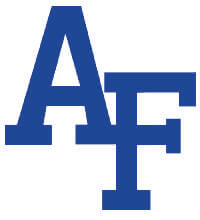Priorities:United States Air Force Academy Student Priorities
Contents
STRATEGY #1: PROMOTING I&E IN ACADEMIA
Tactic #1: I&E Minor
Academia ranges from classes to independent research studies and extra instruction sessions to capstone projects. By incorporating different styles of learning through a varied class structure and system we will already be stimulating new brain cells and empowering students. Instead of having every class follow the same rigid lesson structure with daily class objectives, we can incorporate milestone classes or alternative methods. Essentially, by promoting diversity in the way classes are taught and run will open students’ minds to the world and its different possibilities. Additionally, our Leadership Circle is working on establishing an Innovation Minor at the Academy which would incorporate these elements into a set of classes and experiences.
-Team
STRATEGY #2: PROMOTING A CULTURE OF CREATIVITY
The United States Military is designed to create and shape a certain mindset: one of excellence, perfection, and zero tolerance for failure. While extremely valuable in many military domains, this disposition can lead to a lack of creativity in areas where development and innovative solutions are most needed. In order to combat this problem, we must advocate for and advance the notion of failing in the laboratory to excel on the battlefield. Our purpose is to better equip the warfighters downrange by prototyping and experimenting beforehand in the comfort of our learning leadership laboratories.
To instill these practices and turn this vision into a reality, we must tackle these two main points:
Tactic #1: Teach Exponential Thinking
We must directly teach cadets, faculty, and staff the design and exponential thinking processes, leading them through workshops and implementing the process from inception to application. These processes can be taught and utilized in the classrooms and in the squadrons, covering both the academic and military portion of the Academy.
Tactic #2: Outside Forces
Expose cadets, faculty, and staff to outside innovative and creative forces. By exposing the Academy to design workshops, creative thinking events, and inspirational speakers we will begin to bridge the understanding and application gap that exists in military environments. Seeing the innovative practices at work and going through that process will help to solidify people’s grasp on how to most effectively utilize these tools and how to go about implementing valuable solutions. Moreover, by partnering with non-military organizations, the Academy will be able to participate in some of the traditionally non-governmental spaces, allowing for a wider breadth of exposure and understanding. Overall: connect and see projects through.
-Yann Wollman
STRATEGY #3: BREAKDOWN STUDENT AND PERMANENT PARTY BARRIERS
Tactic #1: Monthly Board Meetings
In the military, like big organizations, it is ran through an extensive chain of command. This makes it very difficult for conversations to be had between the top of the organization and the bottom. It also takes extremely long for changes or recommendations to be passed to the top of the organization to make decisions. Therefore, for change and decisions to happen fast, rank and the chain of command needs to be removed to be able to innovate quickly. This will allow for more free thinking ideas and upper leadership to hear opinions of people throughout the entire chain of command.
The Idea
One solution to fix this problem is to have monthly board meetings, where the board would consist of the upper leadership and then random people throughout the entire chain of command. This would result in diverse backgrounds of age and most importantly, thought. In turn, the specific members who have the ability to make decisions would ultimately have a chance to see different perspectives in order to innovate and make changes to improve the organization as a whole.
-Trey Arnold
STRATEGY #4: SOLIDIFYING CONNECTIONS AND BUILDING A CONSISTENT NETWORK
Tactic #1: Quarterly Dinners
Air Force Academy Cadets rarely get the opportunity to talk and experience how civilian companies become successful. In order to accomplish this goal, we think it would be a wonderful opportunity to bring CEOs and other business leaders to come together and help change the way students think and dream. It will help promote innovative thinking and provide an avenue for students to bounce ideas off of people who have changed their companies in order to succeed.
Tactic #2: Guest Speakers
Going along similar lines as above, cadets or students like to hear from an outside perspective. They want to hear from some of the most famous people and hear their story to fame. This brings credibility to innovation and gets people talking about "what could I accomplish?" Students get really excited to talk and listen to people they look up to. Again, it sparks students to dream big and gives them the push they need to actually take action.
-Matt Koch
RELATED LINKS
United States Air Force Academy
Video Link: https://www.youtube.com/watch?v=Kfq6MyzMH20
Related links
